1. Honey begins as nectar
This sugary liquid is produced by flowers to encourage insect pollinators to visit. Nectar is 70-80 per cent water with a mixture of three different sugars: sucrose, glucose and fructose, plus some scent chemicals to help draw bees to the flowers.
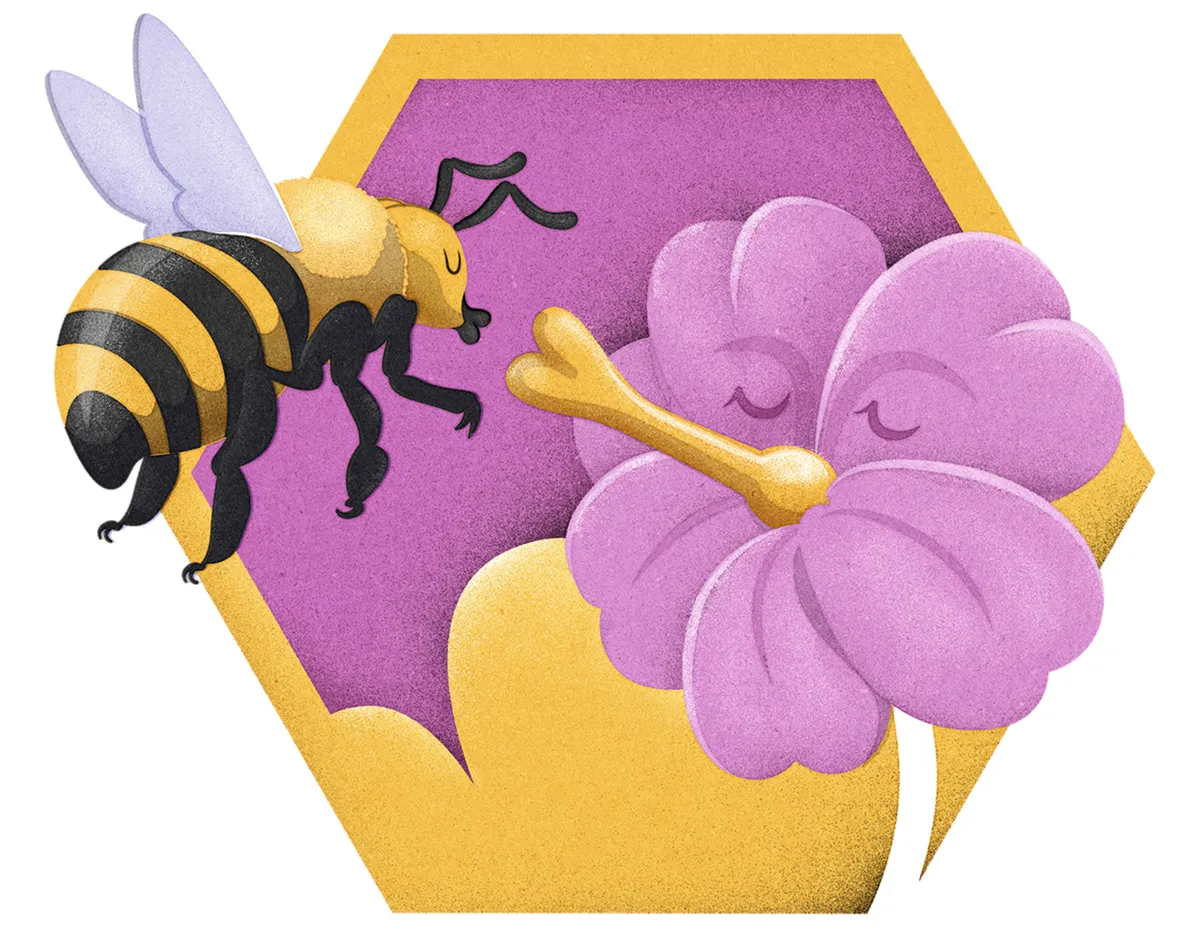
2. Drinking and storing the nectar
Honeybees suck nectar through their hollow proboscis (a straw-like tongue) and store it in the first chamber of their stomach, called the proventriculus. An enzyme called invertase breaks the sucrose down into a simpler glucose and fructose molecules. Other enzymes raise the acidity of the nectar, which helps kill bacteria.
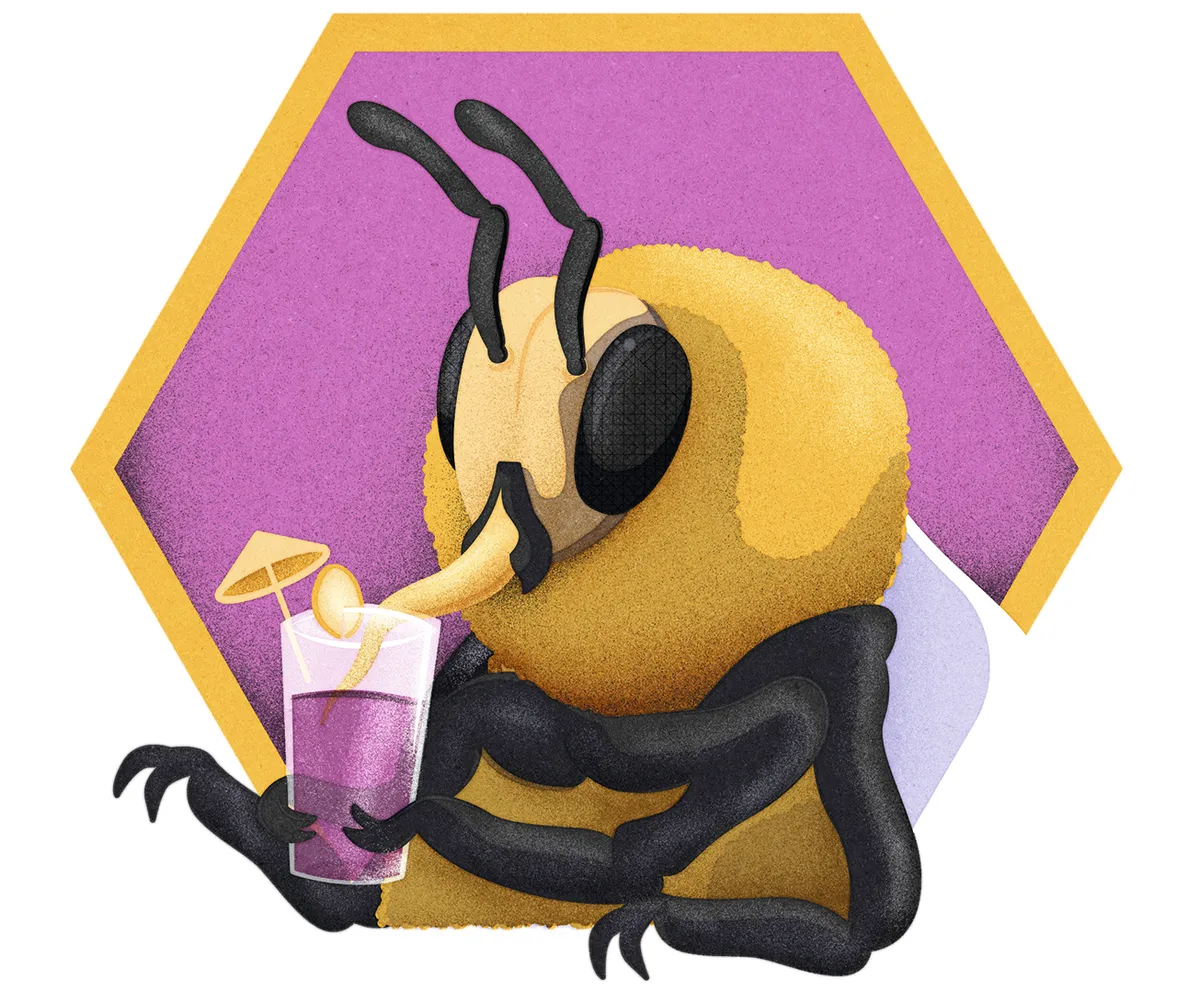
3. Travelling back to the hive
Bees can carry up to half their body weight and have one of the highest power output rates in the animal kingdom. This lets them forage up to 5km from the hive, but at this range most of the nectar payload is used for the flight home.
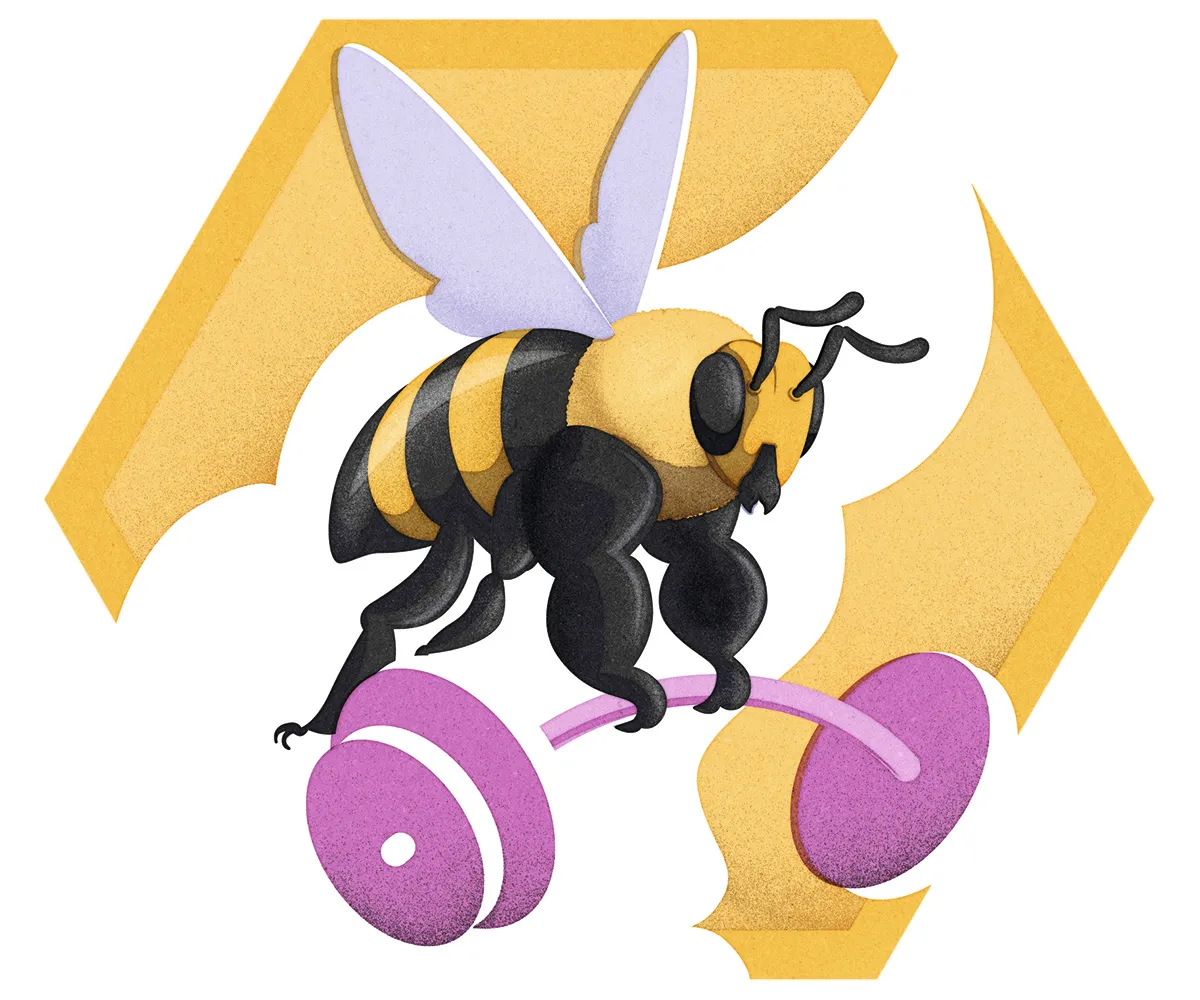
4. In the hive
Back at the hive, forager bees regurgitate the nectar. It’s then passed between worker bees, mouth-to-mouth, to reduce its water levels. Once the water content drops to 18 per cent, mould and bacteria can’t grow and the nectar becomes honey, which the worker bees push into wax chambers.
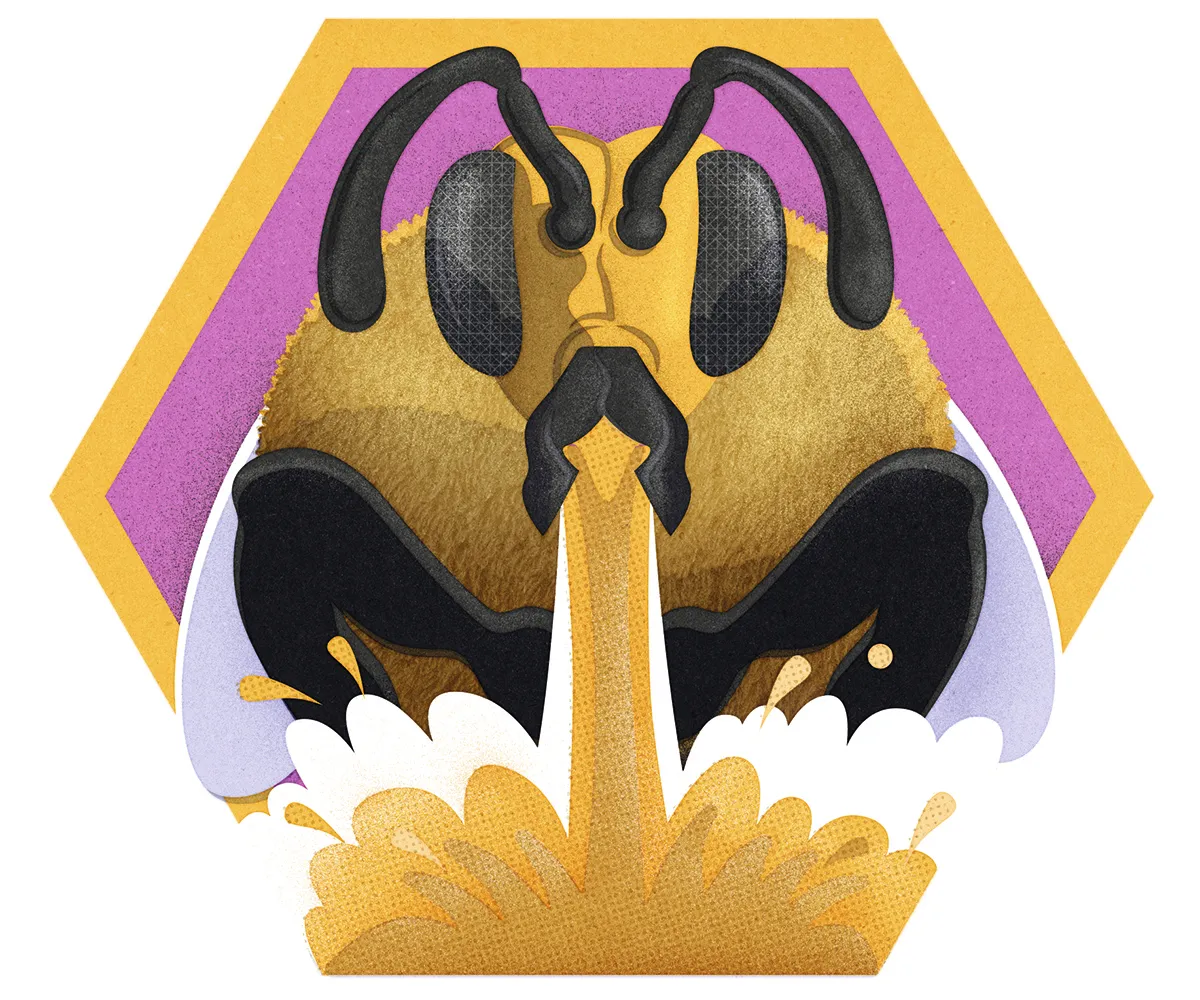
5. Using the honey
In spring and early summer, the bee colony uses all its honey to feed the larvae, building its workforce to a summer peak of 50,000 bees. These workers then spend two to three weeks madly gathering nectar to last the winter. It takes 12 bees their entire life to make a teaspoon of honey.
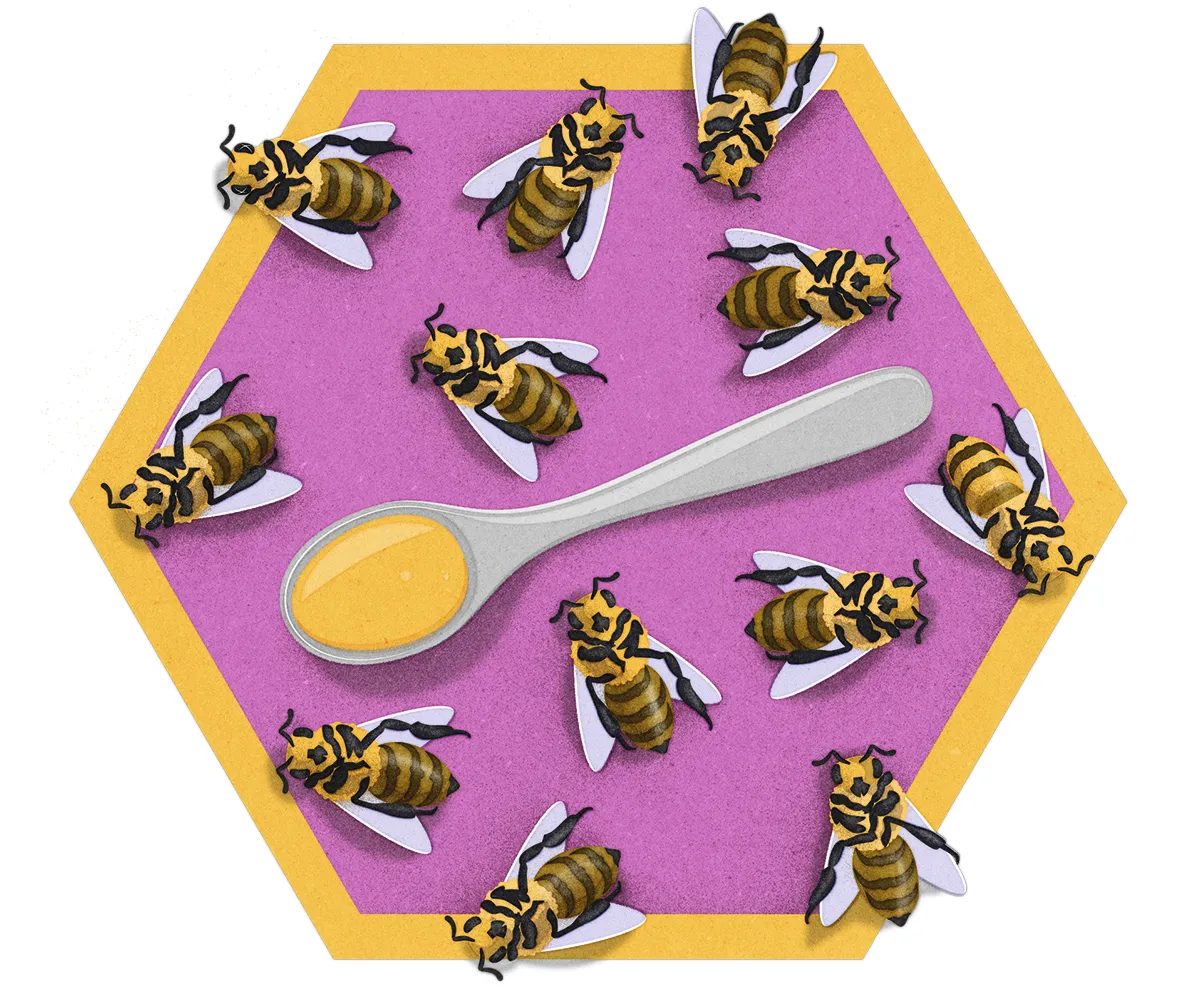
Read more:
- Could human singing make bees produce more honey?
- Can you use honey to treat a burn?
- Why do bees buzz?
- Do bees have knees and, if so, what’s so special about them?
To submit your questions email us at questions@sciencefocus.com (don't forget to include your name and location)

